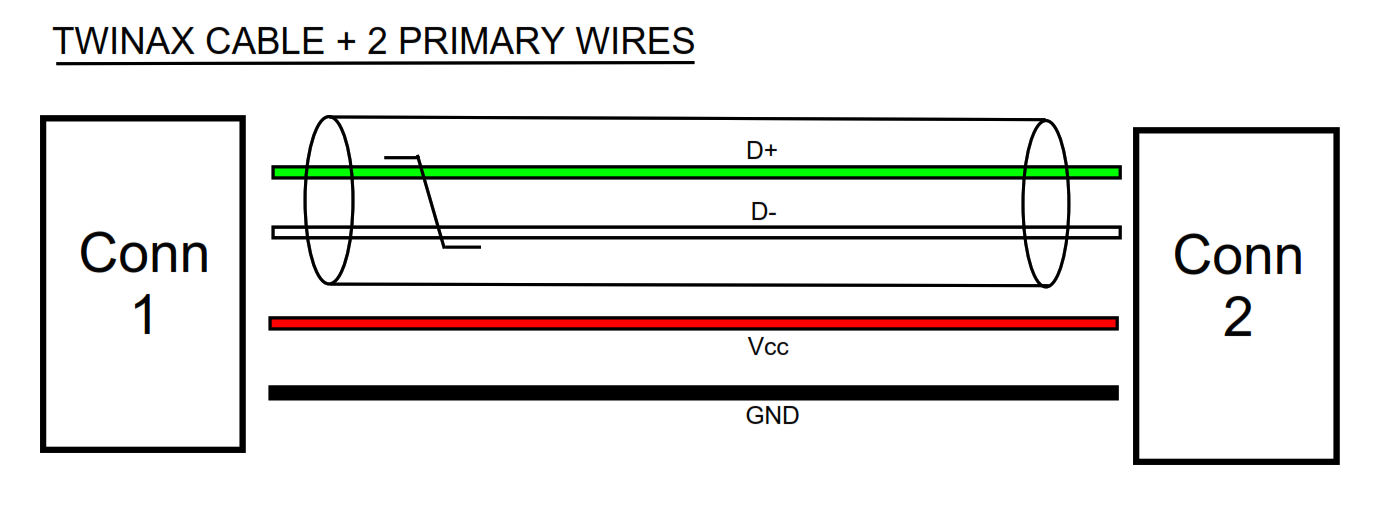I am currently designing a wiring loom which includes USB 2.0 cable within it. It is critical that the thickness of this leg is as thin as possible due to the constraints of my client. Unfortunately, the USB 2.0 cable currently specified (PIC USB2624) is much thicker that I would ideally like for it to be, having an outside diameter of 4mm.
This has lead me to the idea of splitting the D+/D- wires from the GND/Vcc wires in order to reduce the profile of this USB 2.0 cable. The plan would be to use a 90Ω Twinax cable (Molex 1000680085) for the D+/D- signal pair and then to use 2 primary wires for the GND and Vcc connections. All of the wires would be starting in the same connector and terminating into the same connector, its just that they wouldn't be within the same cable. Would this be possible? And would I need to do anything to keep the USB 2.0 functional?
Images of this can be seen below...
Any advice is appreciated


